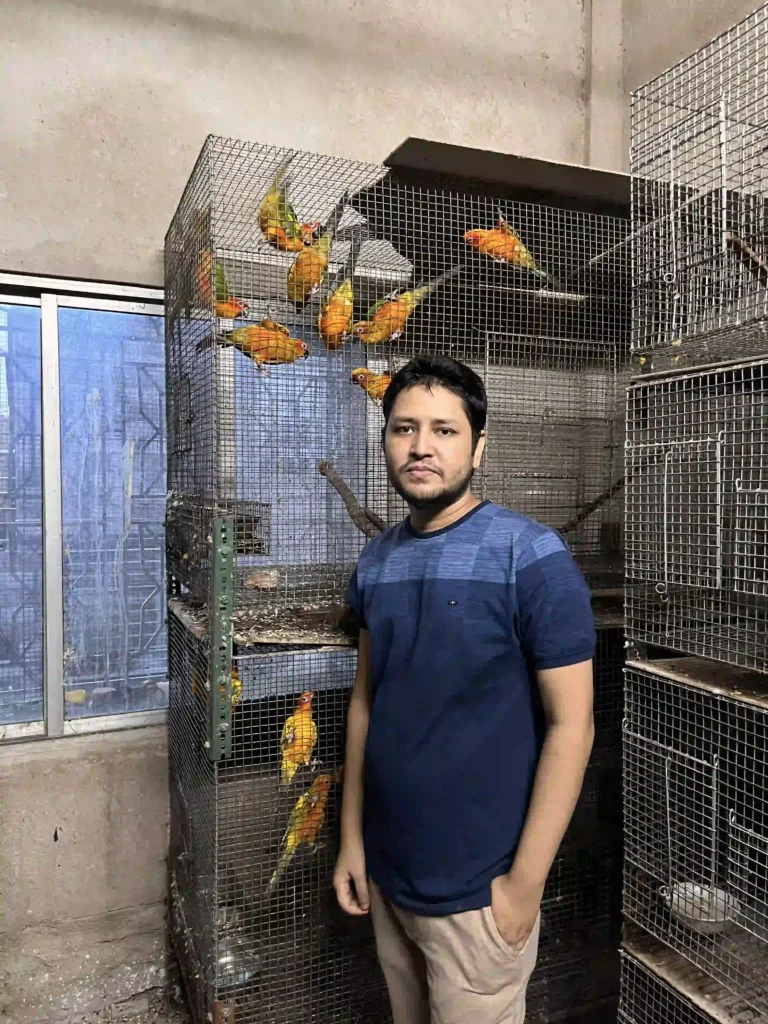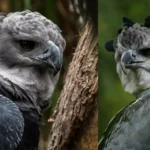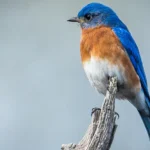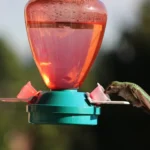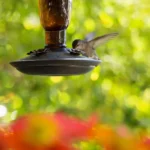In our comprehensive guide, we collect the 11 types of geese that are found in Florida, exploring their habitats, behaviors, and special features.
Types Of Geese In Florida:
1.Snow Goose (Anser caerulescens):

The Snow Goose is known for its stunning white plumage, though some individuals may have dark feathers on their wings. While not as commonly found in Florida as in other regions, Snow Geese do occasionally grace the state with their presence.
Identification: Snow Geese come in two color phases: white and blue. The white phase is most recognizable, with the entire body covered in white feathers. The blue phase, also known as the “blue goose,” has a bluish-gray body with a white head.
Range: Snow Geese breed in the Arctic tundra and migrate to warmer areas during winter. In Florida, they are considered occasional visitors, particularly during the colder months.
Diet and Foraging Behavior: These geese primarily feed on plant material, including grasses, sedges, and grains. They are known for their habit of “grubbing,” which involves uprooting plants with their bills to access the roots.
Where to Find: Snow Geese are often seen in wetlands, fields, and coastal areas. They may form large flocks during migration, making them easier to spot.
- Length: 25 – 31 in (64 – 79 cm)
- Weight: 81.13 oz (2299 g)
- Wingspan: 54.3 in (138 cm)
CALL:-
2.Ross’s Goose (Anser rossii):

The Ross’s Goose is a smaller relative of the Snow Goose and is occasionally seen in Florida during migration. With its white plumage and small size, it’s often mistaken for a Snow Goose.
Identification: Ross’s Geese are small with a similar appearance to the white phase of Snow Geese. They have white plumage and a short, stubby bill.
Range: These geese breed in the Arctic regions of North America and migrate to warmer areas during winter, including parts of Florida.
Diet and Foraging Behavior: Like Snow Geese, Ross’s Geese primarily feed on plant material. They forage by grazing on grasses, sedges, and agricultural fields.
Where to Find: Look for Ross’s Geese in wetlands, fields, and agricultural areas, especially during their migration periods.
- Length: 21 – 26 in (53 – 66 cm)
- Weight: 59.2 oz (1678 g)
- Wingspan: 47 – 54 in (119 – 137 cm)
CALL:-
3.Greater White-fronted Goose (Anser albifrons):

The Greater White-fronted Goose is known for the distinctive orange patch on its bill and its speckled belly. While not as common as some other geese in Florida, it does make appearances during winter.
Identification: This goose has a grayish-brown body with a distinctive orange patch on its bill and a white line on its forehead. Its belly is covered in black spots.
Range: The Greater White-fronted Goose breeds in the Arctic and migrates south during winter. In Florida, it is found primarily during the colder months.
Diet and Foraging Behavior: These geese have a varied diet that includes plants, grains, and occasionally insects and invertebrates.
Where to Find: Look for these geese in wetlands, agricultural fields, and grassy areas during their winter stay in Florida. Their distinctive markings make them stand out among other waterfowl.
- Length: 64-81 cm (25-32 in)
- Weight: 1.93-3.31 kg (4 lb 4 oz – 7 lb 5 oz)
- Wingspan: 130-165 cm (51-65 in)
CALL:-
4.Cackling Goose (Branta hutchinsii):
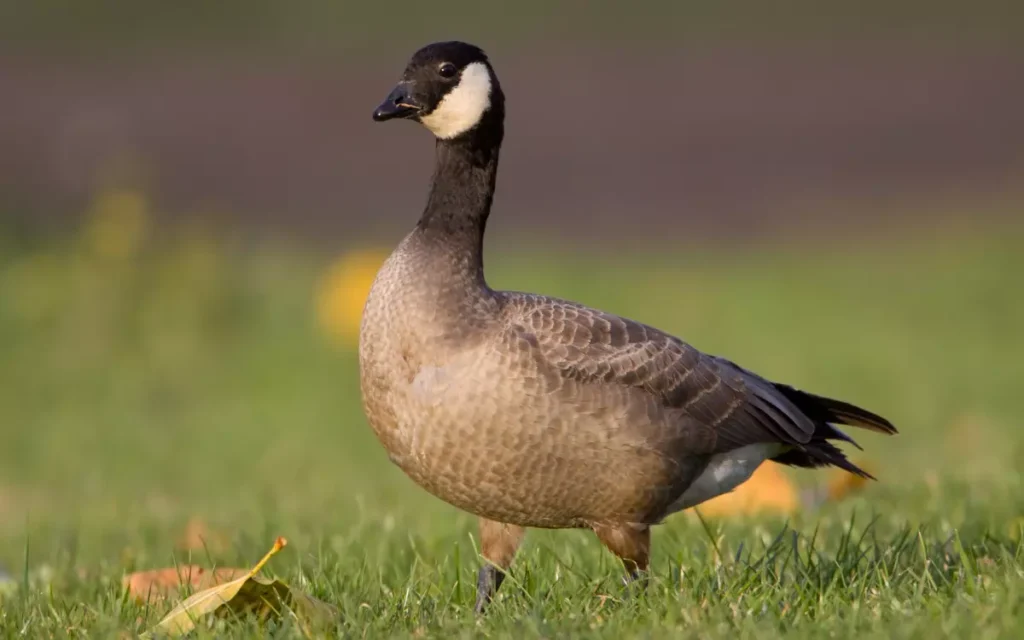
The Cackling Goose is a petite goose that often resembles a smaller version of the Canada Goose. While it’s not a common sight in Florida, it does make appearances during migration.
Identification: Cackling Geese are smaller than Canada Geese, with similar markings. They have a black head and neck, white patches on their face, and a white chinstrap.
Range: These geese breed in northern regions and migrate to warmer areas during winter, including parts of Florida.
Diet and Foraging Behavior: Cackling Geese primarily feed on plant material, including grasses and grains. They are often seen foraging in agricultural fields.
Where to Find: Look for Cackling Geese in wetlands, fields, and grassy areas, particularly during migration periods.
- Length: 22 – 30 in (56 – 76 cm)
- Weight: 105.9 oz (3001 g)
- Wingspan: 43 – 47 in (109 – 119 cm)
CALL:-
5.Brant (Branta bernicla):
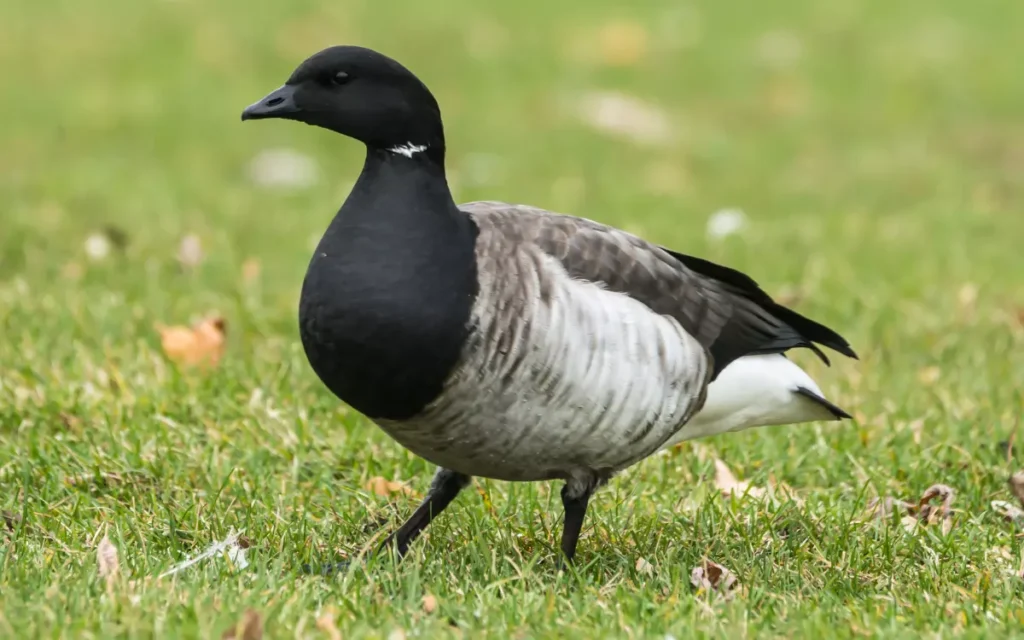
The Brant is a dark goose with a distinctive white patch on its neck. While not as commonly seen as some other geese in Florida, it does occasionally visit coastal areas.
Identification: Brant geese are dark brown or black with a white patch on their neck. They have a shorter neck compared to other geese.
Range: Brant geese breed in the Arctic and migrate south to coastal areas during winter. They occasionally make appearances along Florida’s coasts.
Diet and Foraging Behavior: These geese primarily feed on sea plants, algae, and eelgrass. Their coastal diet sets them apart from other geese species.
Where to Find: Look for Brant geese along coastal areas, estuaries, and beaches. Their preference for marine habitats distinguishes them from other waterfowl.
- Length: 22 – 26 in (56 – 66 cm)
- Weight: 63.84 oz (1809 g)
- Wingspan: 43 – 48 in (109 – 122 cm)
CALL:-
Read also:-
- 14 White Birds in Florida: Exploring Their Length,Weight,Wingspan,Locations
- 36 Species Warbler Found Florida:Length,Weight ,Wingspan
- 10 Woodpeckers in Florida (Id & Pic)
- 9 Most Cutest Tiny Birds In Florida
6. Barnacle Goose (Branta leucopsis):

The Barnacle Goose is a rare sight in Florida. Its distinctive black face and chest markings set it apart from other geese species.
Identification: Barnacle Geese have a black face and chest with white markings on their body. Their overall appearance is quite striking and unique.
Range: These geese breed in Arctic regions and are known for their long migrations. While rare, they have been spotted in Florida on occasion.
Diet and Foraging Behavior: Barnacle Geese primarily feed on grasses and plants. They forage in a variety of habitats, including wetlands and fields.
Where to Find: If you’re lucky enough to spot a Barnacle Goose in Florida, look around open fields near water bodies. Their distinctive markings make them stand out.
- Length: 23 – 28 in (58 – 71 cm)
- Weight: 62.4 oz (1768 g)
- Wingspan: 52 – 56 in (132 – 142 cm)
CALL:-
7. Greylag Goose (Anser anser):
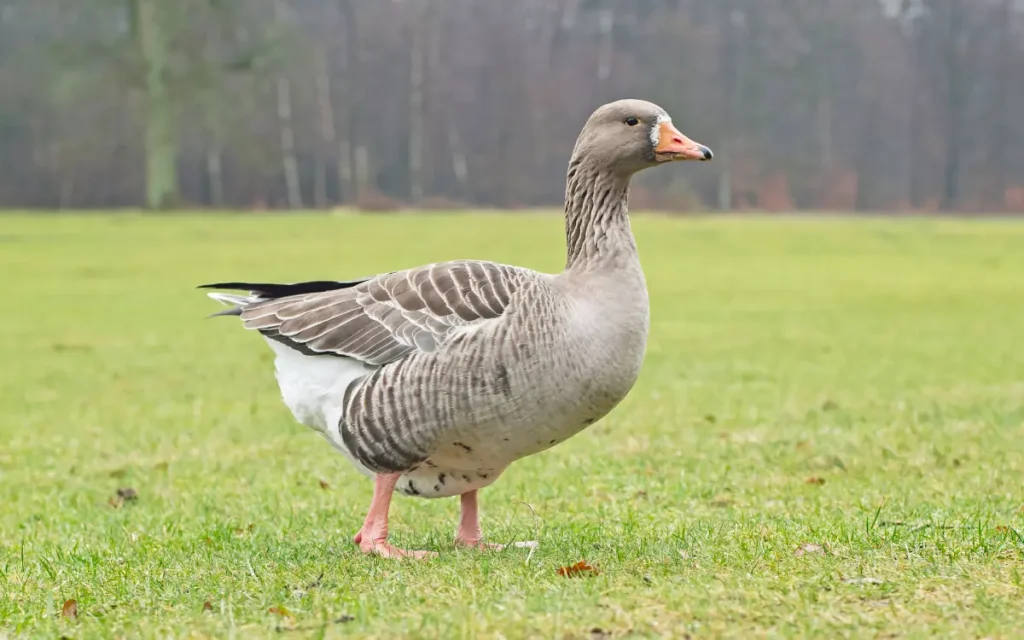
The Greylag Goose is a domesticated goose that’s often found in parks and ponds. While not a native species, it has become a familiar sight in many urban areas.
Identification: Domesticated Greylag Geese can vary in color, but they often have gray feathers and orange bills. They are larger than some other domestic geese breeds.
Range: These domestic geese are found in various parts of the world due to their popularity in captivity. In Florida, you’ll often find them in parks and ponds.
Diet and Foraging Behavior: Greylag Geese have a diet similar to their wild counterparts, consisting of grasses and grains. Their adaptability to urban environments has contributed to their prevalence.
Where to Find: Look for Greylag Geese in urban parks, ponds, and lakes. Their distinctive appearance and friendly demeanor make them popular among visitors.
- Length: 74-91 cm (29-36 in)
- Weight: 3.3 kg (7 lb 4 oz) on average
- Wingspan: 147-180 cm (58-71 in)
CALL:-
8. Egyptian Goose (Alopochen aegyptiaca):
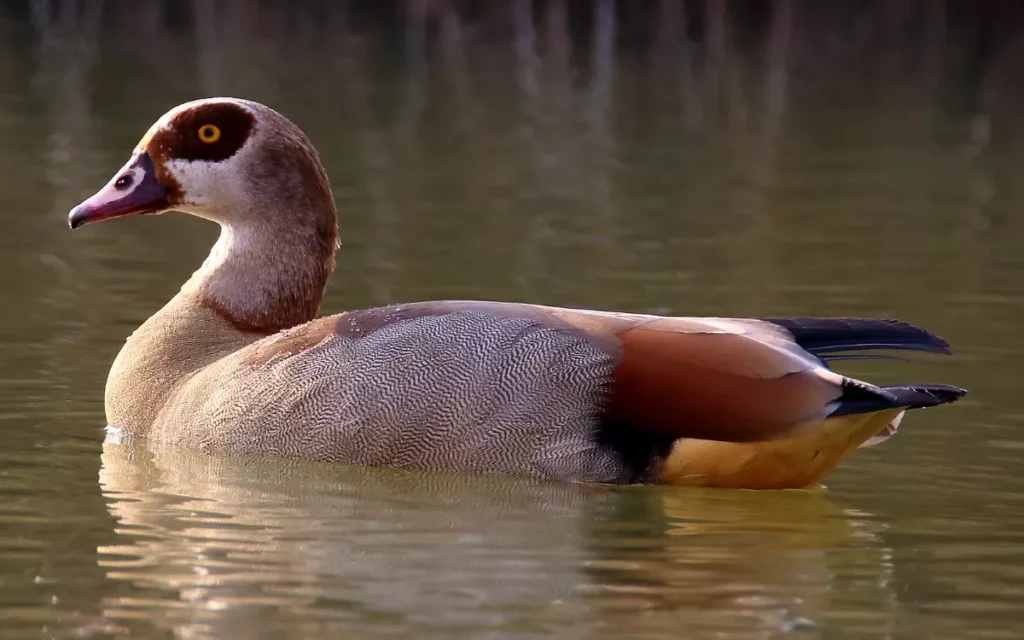
The Egyptian Goose is a striking bird with brown plumage and white markings. Though not native to North America, it has been introduced in various regions, including Florida.
Identification: Egyptian Geese have a brown body with distinctive white markings on their face, neck, and wings. They also have a prominent eye-ring.
Range: Originally from Africa, Egyptian Geese have been introduced to various parts of the world. In Florida, you can find them in lakes, ponds, and parks.
Diet and Foraging Behavior: These geese have a varied diet that includes grasses, grains, and even small aquatic creatures. Their adaptability has contributed to their success in different habitats.
Where to Find: Look for Egyptian Geese in lakes, ponds, and parks, where they often gather in groups. Their unique appearance makes them easy to spot.
- Length: 24 – 29 in (61 – 74 cm)
- Weight: 70 – 77.5 oz (1984 – 2196 g)
- Wingspan: 52 – 60 in (132 – 152 cm)
CALL:-
9. Swan Goose (Anser cygnoides):

The Swan Goose is another domestic goose that’s often found in parks and ponds. With its distinctive black head and white face, it’s a captivating sight.
Identification: Domestic Swan Geese have a black head and neck with a white face and body. They are medium-sized and have a graceful appearance.
Range: These domestic geese are commonly found in captivity and have been introduced to various parts of the world. In Florida, you might come across them in parks and ponds.
Diet and Foraging Behavior: Swan Geese have a diet similar to their wild counterparts, consisting of grasses and grains. Their presence in urban environments is favored by their adaptability.
Where to Find: Look for Swan Geese in urban parks, ponds, and lakes. Their elegant appearance and calm demeanor make them a charming addition to any water body.
- Length: 81-94 cm (32-37 in)
- Weight: 2.8-3.5 kg (6.2-7.7 lb) or more
- Wingspan: 160–185 cm (63–73 in)
CALL:-
10. Bar-headed Goose (Anser indicus):
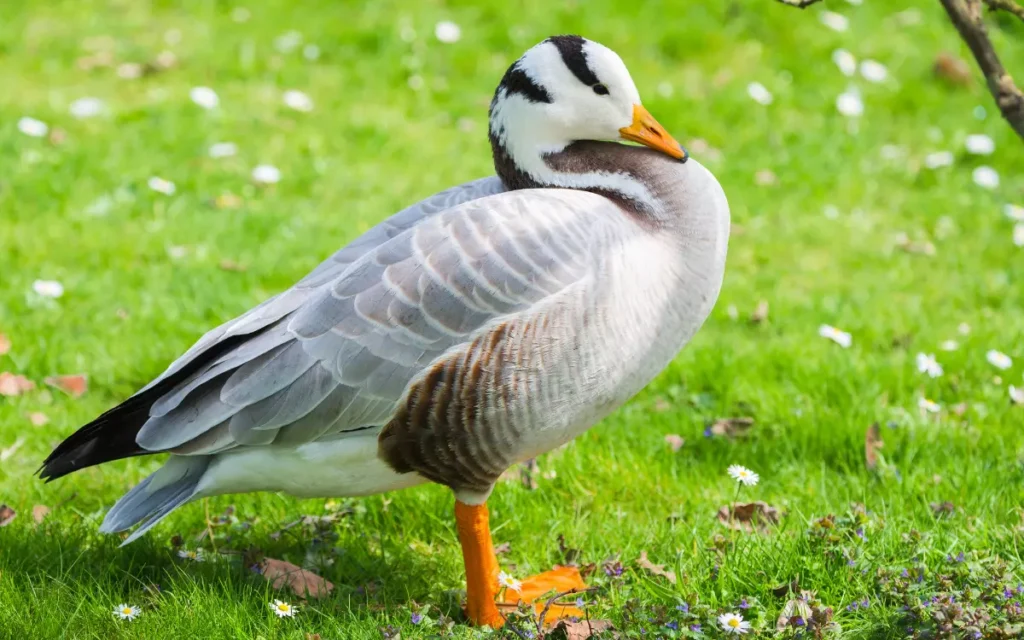
The Bar-headed Goose is a domestic goose breed known for its distinctive black bars on its neck. Though not native to North America, it can be found in various location in florida.
Identification: Domestic Bar-headed Geese have white bodies with black bars on their necks. They are medium-sized and have a striking appearance.
Range: These domestic geese are commonly found in captivity, often in settings like farms, parks, and ponds.
Diet and Foraging Behavior: Bar-headed Geese have a diet similar to their wild counterparts, consisting of grasses and grains. Their adaptability to different environments has contributed to their popularity.
Where to Find: Look for Bar-headed Geese in parks, farms, and ponds. Their unique markings make them stand out among other domestic geese breeds.
- Length: 71-76 cm (28-30 in)
- Weight: 1.87-3.2 kg (4.1-7.1 lb)
- Wingspan: 140-160 cm
CALL:-
Some FAQs with short answers:
1. What kind of geese live in Florida?
Ans: Florida is home to various geese, including Canada Geese and Egyptian Geese.
2. Why are there so many geese in Florida?
Ans: Florida’s abundant wetlands and mild climate provide ideal habitats for geese.
3. Are there Egyptian geese in Florida?
Ans: Yes, Egyptian geese are present in Florida, often seen in parks and near bodies of water.
4. Are geese native to Florida?
Ans: Some geese species, like the Canada Goose, are native to Florida, while others have been introduced.
5. Where are Canadian geese in Florida?
Ans: Canadian geese can be found throughout Florida, especially in wetland areas and during migration seasons.
6. What kind of ducks are in Florida?
Ans: Florida hosts a variety of ducks, including Mallards, Mottled Ducks, and Wood Ducks.
Conclusions:
Florida geese are interesting birds that thrive in the state’s warm climate and wetlands. They are often seen near lakes and rivers, providing a great opportunity for bird watching and learning about wildlife conservation.


